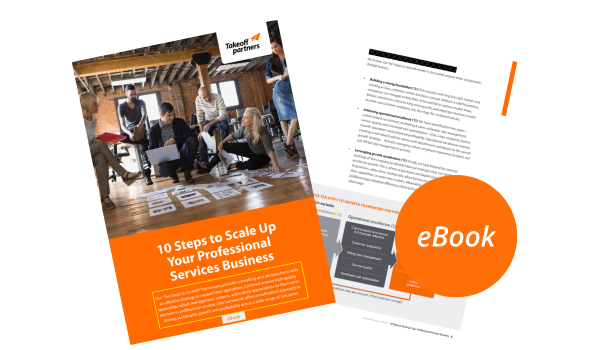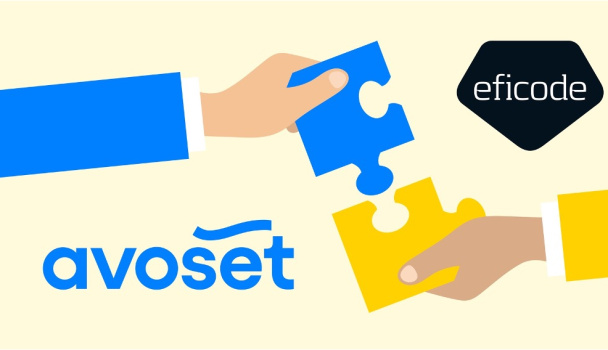Expanding to North America: here’s how you do it in 2021

Jouko Virtanen from Takeoff Partners has overseen several successful expansions to North America, most recently with Howspace. He says that in 2021, the same laws mostly apply to expanding to North America as before—except that now you need to also appreciate the accelerating digitalization and turn it to your advantage.
March 2021
Here at Takeoff Partners, we are all passionate about helping SaaS startups expand abroad and make their groundbreaking technology available for larger audiences. All of us have experience in successfully internationalizing companies—and among us, Jouko Virtanen is the expert of North America. Most recently, he has been deeply involved in helping our portfolio company Howspace grow their business in the U.S. and Canada, working as the company’s Sales Director. The combined effect of hard work and the accelerating digitalization has put Howspace on an impressive growth trajectory with nearly tripling monthly recurring revenue level compared to one year back.
In our blog, Jouko has previously shared his tips and wisdom on expanding your business to North America in general, as well as joined forces with CEO Ilkka Mäkitalo to discuss how Howspace has found its footing in the continent.
This time, we are approaching this topic in the context of a world that has drastically changed. The COVID-19-pandemic is making business development challenging in many different ways—but should it? Not if you listen to Jouko—both from the perspective of internationalization as well as from the perspective of Howspace, an expert of digital organizational development.
“Business development should not and cannot stop although we are temporarily restricted from meeting each other freely. As we have noticed at Howspace, people are becoming readier to connect and network remotely.”
Most of the old rules still apply
1. Start from investigative sales.According to Jouko, this should be the first phase of any expansion initiative to North America. Exploratory or investigative sales stands for an approach in which potential customers are hand-picked and contacted with an aim work together in order to test the product and validate assumptions about market needs. This is helpful in mapping the differences between the company’s existing markets and the North American market, as well as to understand what kinds of solutions clients are currently using for the same need your product is designed for. Investigative sales is a very outbound-driven approach, meaning that the team needs to reach out to potential customers and also actively maintain a fruitful dialogue with them. Also, if your product is a digital platform or application, it is important to understand that the American market is generally a little behind compared to the Nordic market when it comes to adopting emerging technologies. This is why you should identify the early adopters and sell to them first.
2. Invest in content marketing to generate leads.Here’s the truth: leads are more expensive in North America. Reaching the right audience is harder because the market is so big and getting your voice heard is also harder because there is already so much noise. This means you need to be both more intensive and cleverer in how you invest in marketing; half-cooked efforts will not bear any fruit. When it comes to B2B SaaS, Jouko’s advice is to create a high-quality content marketing plan and routine—SEO-optimized articles, eBooks, white papers, webinars, etc. If you don’t have experience in this type of work in-house, don’t try to do it on your own but find a skilled content marketing partner. Also, make sure that your salespeople consistently communicate with marketing—as soon as sales discovers new information about your customer’s interests and needs, your team should assess if it can be used in marketing.
“It took us over two years at Howspace to create a content marketing system that really works and brings in leads, but it was well worth it. Today, it has grown into an impressive engine generating over 100 sales qualified leads in a week. We have three—soon four—people working full time just in lead qualification and booking sales meetings.”
New insight on how to succeed in 2021
1. Yes, you still should open a local office.Without local presence, making it in North America was hard before. Now, with travel restrictions in place, things have changed—to favor physical presence even more. Before, you could maybe have been able to get started by traveling back and forth for meetings. That is not an option right now, so you need someone who is in the country. Obviously, you are still unlikely to be able to meet potential clients in person, at least for the most part, but being in the same time zones helps a great deal, as does the cultural proximity. Ideally, you should send over someone who knows your company inside out and have them team up with someone local who understands your American customers.
“I was based in Toronto when managed GIA’s expansion to Americas. More recently, besides Howspace, also Videoly has opened an office in Toronto. It’s a good place to start from – a large metropolis in Canada and in proximity of many large U.S. cities such as New York and Detroit.”
2. Find
a way to network, acquire partners and create references.
Traditionally,
North America has a very network-based business culture so the current
situation is challenging. As soon as restrictions are lifted, you should find
events where you can network. Until then – people still need to do business, so
keep your finger on the pulse of how it’s currently done in your target market
and what the near future looks like. Also, identifying the right kind of
partners and contacts for your business—those who are potential clients or
could connect you with potential clients—are very valuable. Also, references
are absolutely crucial with sales, because people are hesitant to be the first
ones to like your product.
“In North America, you may find experts or consultants that don’t even exist in most parts of the word. These people are influencers within their respective niche and if they are a good fit for your product, they can become powerful partners, associates or references. You just need to find them.”
Final words: it’s not about magic, it’s about hard work
North America is currently the world’s
largest economy, so becoming successful in it may feel unattainable,
even daunting. Jouko Virtanen highlights two aspects on this front:
1. Becoming
successful in North America doesn’t necessarily have to mean becoming
successful in ALL of North America.
It truly is a
large market. This is why for most companies, to achieve the next level in
business growth it may be enough to gain a foothold in some part of the market.
For example, it could be the East Cost of the U.S. and Eastern parts of Canada. This
is also why it matters a lot where you start. Where, exactly, are your most
ideal customers located?
2. At
the end of the day, internationalization is above all hard work.
Persistence
is very important when it comes to the American market. Things will probably
take longer as planned—the sales process over there generally does tend to
take longer and require perseverance. Also, unforeseen obstacles will probably
appear. This is also why anyone looking to enter the market should have planned
for some buffer.
“Often, it takes time for North American clients until your offering starts resonating with them and this is why you should not give up too easily. It feels really good and makes you proud of your hard work when the client, after finally making the deal, thanks you for being so persistent with us.”






